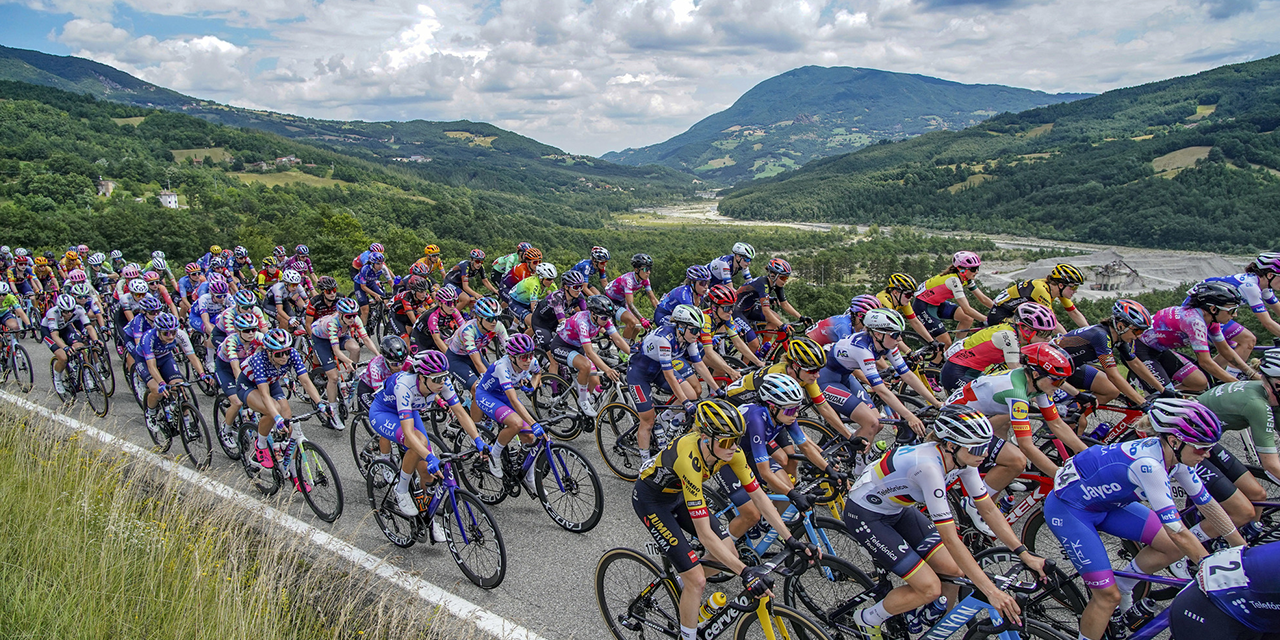As of 2024, the Giro d’Italia Women (formerly Giro Donne) will enrich the already vast portfolio of events held by RCS Sport, marking a new era for the race.
Let’s take a proper look at the history of women’s cycling’s original Grand Tour, which already boasts a pretty rich past: the first edition of the women’s Corsa Rosa was held in 1988 and, except for the 1991 and 1992 seasons, it has consistently taken place to this day, making it the longest-running women’s Grand Tour on the calendar. That year, the race was won by Maria Canins, still a true icon of the movement and heir to the pioneers of women’s cycling. The South Tyrolean, then Italian champion, won the GC at the end of nine stages, including the opening time trial. The following year, a rest day was added in halfway through the competition, which was eventually won by another Italian, Roberta Bonanomi. The Bergamasque only managed to take the lead in the thrilling final stage by dethroning Germany’s Rossner. The first non-Italian winner was Catherine Marsal in 1990. The French athlete carried the Maglia Rosa from the first to the last stage, just as Gianni Bugno had done at the men’s Giro d’Italia just a few weeks earlier. On top of that, the Frenchwoman remains to this day the youngest ever winner of this competition (19 years, 6 months and 2 days).
After not being held in 1991 and 1992, the Giro d’Italia Women returned in 1993, with the victory of young Slovakian Lenka Ilavska. 1994 encompassed glory and tragedy in the space of a few months. In fact, the Giro was won by 21-year-old Michela Fanini, the rising star of women’s cycling, who tragically lost her life in a road accident at the end of October. The second half of the 90s, with the Giro growing from 8 or 9 stages to 12 or 13, is marked and defined by the dominance of the unstoppable Tuscan climber Fabiana Luperini. The “Pantanina” – as she was nicknamed at the time due to her technical and physical skills resembling those of Marco Pantani – won four consecutive editions until 1998. The following two Giro went to Joane Sommariba of Spain, with the 2000 edition still remembered for being the longest ever: prologue, fifteen stages and rest day in the space of two weeks.
Switzerland’s Nicole Brandli opened her non-consecutive hat-trick in 2001, interspersed with victories by Svetlana Boubnenkova (2002) and Nicole Cooke (2004). Another double was scored in 2006-07 by Edita Pucinskaite, Lithuanian by birth and Tuscan by adoption. In 2008, ten years after her last triumph, Luperini won her fifth Giro, establishing the still unbeaten record of most editions won. 2009 brought the first German victory thanks to Claudia Hausler, while twelve months later victory went to American Mara Abbott, who would do it again three years later.
The race’s return to its eight to ten-day format marked the beginning of the Dutch era: a true sports dictatorship featuring eleven victories in the last thirteen editions, interrupted only by those of the Americans Abbott (2013) and Guarnier (2016). The “orange” athletes ruled the Corsa Rosa with three of the biggest names of world cycling: Marianne Vos won the Giro in 2011, 2012 and 2014, Anna Van der Breggen scored a poker by winning in 2015, 2017, 2020 and 2021 and, last but definitely not least, Annemiek Van Vleuten triumphed in 2018, 2019, 2022 and 2023.
Anticipation is building ahead of the event, and fans do not have much longer to wait. Now at its 35th edition, the Giro d’Italia Women is looking forward to further increasing its position as the main pillar of stage racing on the women’s calendar..






























